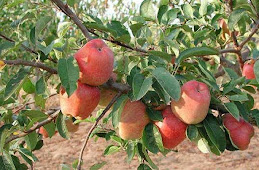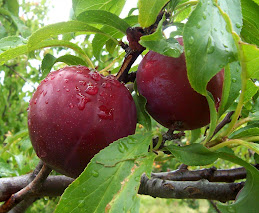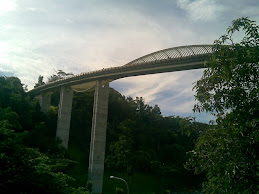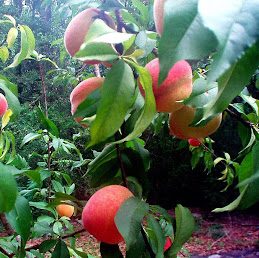http://www.beyondinfinite.com/touch_screen.html
http://www.phonearena.com/news/Article-Touchscreen-technologies-in-phones_id3067
http://www.phonearena.com/news/Article-Touchscreen-technologies-in-phones_id3067/page/2
http://www.phonearena.com/news/Article-Touchscreen-technologies-in-phones_id3067/page/3
By PhoneArena Team, Posted: 26 Aug 2008, 06:35,

https://blogger.googleusercontent.com/img/b/R29vZ2xl/AVvXsEjieY-5YMkvTum88UGFF27zSyYiHU6wpOwkbNlgpr9h8o66rk5PxqNCkLLy1rFv1dgLOfW__ND3xQJfkY0RXb-YqTmh165y3AySUan3w4RTDe84EKKi9z27JnUj7DqHxVdZ39LPNrRr0qAe/s1600/n2.jpg
http://i-cdn.phonearena.com/images/articles/17839-image/n2.jpg
http://www.phonearena.com/news/Article-Touchscreen-technologies-in-phones_id3067/page/2
Introduction:
Touchscreen phones are becoming a part of our lives more and more each day. This is due to the fact that the touchscreen control method allows a device to be navigated much more easily, quickly and intuitively, since you can activate given applications by touch, rather than having to press a button multiple times (e.g. the D-pad).
There are a few different types of technology that can be used to achieve this control method, each of them having its pros and cons.
Types of touch Screens:
When it comes to touch screen technology, the four most prevalent types are Capacitive, Infrared, Resistive, SAW (surface acoustic wave) and Guided Wave with Resistive and Capacitive being the most widely used types for Industrial Applications. All of these technologies have their own distinct characteristics, both advantageous and with limitations.

https://blogger.googleusercontent.com/img/b/R29vZ2xl/AVvXsEipMr8jap0GdCJh944sqcI-1yxXOgNeuM30QbcQizu7Hj5A51ijwLzuKpOzHtReWkoF6oTiLGJogCauV5T_d4JzR9odvl7SIreEVUitNe67yF0TnUK0UYb0ToTytCx-XIitWxXcAKi3InCC/s1600/1.jpg
http://i-cdn.phonearena.com/images/articles/17836-image/1.jpg
http://www.phonearena.com/news/Article-Touchscreen-technologies-in-phones_id3067/page/2
Resistive (Pressure sensitive) touchscreen:
As we’ve mentioned above, this is the most widely used touchscreen scheme for the production of mobile phones. It is most common in the Windows Mobile Professional phones, for example HTC TyTN II or HTC Touch Diamond; it is resistant to water and dust, but it is easily scratched and cannot be used with sharp objects. It is represented by three types: 4-wire, 5-wire and 8-wire with the second one being the most used. In contrast to the other types it is composed of three layers, rather than two with the additional layer ensuring greater durability and a much longer life (35 million clicks, instead of 1 million), without impacting the price.
https://blogger.googleusercontent.com/img/b/R29vZ2xl/AVvXsEiKD-dkorK147UuokmDVcA74617BoE61SfLLg-mInE9Bpml8iUnGHh0nYVAm1b0Y1cLEEV3_IDZlY0S-enKcExpzXcYyqY-RNcN2Krw2a_R2Sqx46_cd2o3rhGEI8b5GoMD34v5Gl-IZy9V/s1600/resistive-how-final.jpg
http://i-cdn.phonearena.com/images/articles/17832-image/resistive-how-final.jpg
http://www.phonearena.com/news/Article-Touchscreen-technologies-in-phones_id3067/page/2
This type of technology works according to the following method: there are small plastic dots (spacer dots) between the two layers, which prevent them from touching if there’s no pressure used. There’s electricity going through each one of the layers and in the event of contact, a chain is formed. The amount of the electricity, passing between the layers is then measured, in order to determine the point of touch. Unfortunately, this method cannot report more than one touch at a time and lets through about 85% of the light, emitted by the screen. The good news is that this is the least expensive from all three types of touchsreen systems we are discussing here (you can read about them later on in this article) and you can use any object to touch it, e.g. a stylus or a finger.


https://blogger.googleusercontent.com/img/b/R29vZ2xl/AVvXsEgwnu_d3RHqgZi8Yb-_PtH6zz0Jl4ifXCEcokHLLZNhy5WV4svUXjHzHG9q8TYuL8BDH-GVkRJh4ssb5TFXPUlr6LUWF8ZG4KCUDNEzYL_j_4oPlr1-jw7qvjP068X1b6xnHI4SKmqdAkc2/s1600/Resistive+-+Cons.jpg
http://i-cdn.phonearena.com/images/articles/17819-thumb/Resistive.jpg
http://www.phonearena.com/news/Article-Touchscreen-technologies-in-phones_id3067/page/2
http://www.beyondinfinite.com/touch_screen.html

https://blogger.googleusercontent.com/img/b/R29vZ2xl/AVvXsEhsMN76wYTzoZN1Ydi3Hd1i6f9yFgVvHReT_8kWhviVTFrJaUB2cg-qPrXlXPfI-cAUcIXclj4VUTnwWcNbEwMkWIuqV6JDnVxqq3n25tYQlMM0nDym45AL3ATLD_I4t8uXaVbkUs6REsr2/s1600/2.jpg
http://i-cdn.phonearena.com/images/articles/17837-image/2.jpg
http://www.phonearena.com/news/Article-Touchscreen-technologies-in-phones_id3067/page/2
Capacitive (Electrostatic) touchscreen:
Lately, this type of technology has been gaining popularity in the mobile phone industry, its most renowned representatives being Apple’s iPhone and LG PRADA. The smaller market share of phones with such screens is due mostly to their high price, since this is not a cheap method. It has two main subtypes, one of which cannot register more than one touch at a time, while the other, called „MultiTouch” by their creators (Apple and used in iPhone and iPod) can. In addition, despite not being the first to employ it, these two devices made this type of technological method popular.
https://blogger.googleusercontent.com/img/b/R29vZ2xl/AVvXsEjiVL-OrtDCINOjX-C2Zx6StWNm2KU2oc-y6Bpb4M6nYPLwg7vdkmrysv48lNkqM8Gz3YyEbPYwxHiTaLT0gRylhvs-3yU_-YWETzpaJrtajhgEQOi2BBHy8Anb1AznicwJs9A8SAr1ddGn/s1600/capacitive-how-final.jpg
http://i-cdn.phonearena.com/images/articles/17829-image/capacitive-how-final.jpg
http://www.phonearena.com/news/Article-Touchscreen-technologies-in-phones_id3067/page/2
This system employs just one layer (a grid), covered with an electroconductive material (most often indium tin oxide), providing continuous current with a certain frequency. When touching the screen with an object emitting a constant electric flow, for example a human finger (the human body generates electricity), a change in the current occurs and that’s how the contact point is determined. The pros of this type of technology are that it is scratch, moisture and dust-proof, it lets through about 92% of the light, emitted by the screen and has a very long life (about 225 million clicks). The bad news is that this touchscreen type cannot be activated by contact with inanimate objects (e.g. the gloves that you might be wearing).
A capacitive touch screen is impervious to grease, dirt and water, which makes it ideal for frequent use.
https://blogger.googleusercontent.com/img/b/R29vZ2xl/AVvXsEjbNxA_IysgtwSjN12tICAQ4gpFWM3oW4ywRcPD2dMKCV-wXFrZXjScDfT6L5f-YW8gJ8whQP8PKFgLVMkgkaM30dE5SvSyi7IMAP0w4h8EdgbFpKpztfis9HeHcc8LINtlENRva1xvSgcX/s1600/Capacitive+-+Pros.jpg
https://blogger.googleusercontent.com/img/b/R29vZ2xl/AVvXsEjv5jkmRs-C4pr69coLdBANpjCWB7d51x1XZqivBblGg5bH8CHNLy_3Cw07D-BICAIVBVlBV2PTQ-eZL6CZEAm02oEhK8s2miG7PB2Ypll0hb1IEVsBlVoQR-J0EoNyQoSV9tkpermOZ3mW/s1600/Capacitive+-+Cons.jpg
http://i-cdn.phonearena.com/images/articles/17821-thumb/Capacitive.jpg
http://www.phonearena.com/news/Article-Touchscreen-technologies-in-phones_id3067/page/2
http://www.beyondinfinite.com/touch_screen.html
https://blogger.googleusercontent.com/img/b/R29vZ2xl/AVvXsEjiZ4iqt0bTb4j51C2SJggnV2tNke48IeRUYJpHpdla_WU2rBq8vUdNwiBN212lHdmreLUYHW7vPOqKte5Bfr2ocnKRD_6Q19nvfdTRlzyyi7aZytJ9_topqhLpv3oAWrBruaUQayRe0Cod/s1600/3.jpg
http://i-cdn.phonearena.com/images/articles/17838-image/3.jpg
Infrared (IR) touchscreen:
The infrared technology is not so popular in mobile phones, compared to the other types, since it is the most expensive one. Therefore, the manufactures themselves do not use it in their touchscreen models. It is divided in two subtypes, heat-sensitive and optical. However, the two types are drastically different from one another in the way they work.
The heat-sensitive subtype is the more widely used one, but it is applied in other components of mobile devices. Such an example are the buttons of Samsung SGH-E900 and Samsung U600, which can only be touched with warm objects (e.g. fingers). Unfortunately, you’ll be unable to operate the phone if your fingers are “frozen”, because of cold weather.
http://i-cdn.phonearena.com/images/articles/17831-image/ir-how-final.jpg
http://www.phonearena.com/news/Article-Touchscreen-technologies-in-phones_id3067/page/2
The optical technological method uses infrared beams, which are not visible to the human eye and its only representative among the mobile phones is Neonode N2. It works, using a number of sensors, arranged above and around the screen, forming a grid of invisible beams. If an object (e.g. a finger or a stylus) touches the display, it interrupts the rays in a certain area and thus the touch point is determined.
http://www.phonearena.com/news/Article-Touchscreen-technologies-in-phones_id3067/page/2
The infrared frame housing the transmitters can impose design constraints on operator interface products.
https://blogger.googleusercontent.com/img/b/R29vZ2xl/AVvXsEgC3T8p4QvOPiGczEQpO_8COyvYozpN3vcqoTFwtVdtYcZEbcnI_Pk3wO226S4iluvehyITkdNYjGISOoZI0oOIFOpjb728q7S1X268iaeoyWX7m9n4JJ3uusjrI4BXOcQcboP7m94mpGcB/s1600/Infrared+-+Pros.jpg
https://blogger.googleusercontent.com/img/b/R29vZ2xl/AVvXsEjomKnQRbRfaa3-Hrm3TYBvbPfsRvBiYl9iahSxrpJrcc3z9dWXJrbi0StOP5GLZFzGvNaPF6jvyZxDCyEV0a5dao4drv132g9KShEhG0m5AOCR7w7gsvnpyiwB7X21DSszLAyGaXYmo99x/s1600/Infrared+-+Cons.jpg
http://i-cdn.phonearena.com/images/articles/17820-thumb/Infrared.jpg
http://www.phonearena.com/news/Article-Touchscreen-technologies-in-phones_id3067/page/2
http://www.beyondinfinite.com/touch_screen.html
SAW (Surface Acoustic Wave):
SAW touch screen technology is suggested for use in ATMs, Amusement Parks, Banking and Financial Applications, Gaming Environments, Industrial Control Rooms, and KIOSK. SAW touch cannot be used within NEMA environments, as the technology cannot be gasket sealed. It has excellent durability that allows it to continue working if scratched since the overlay for the touch sensor is a solid glass display. The disadvantage to this glass overlay is that is breakable and won't work in wash down conditions. The waves are spread across the screen by bouncing off reflector arrays along the edges of the overlay. The waves are detected by two "receivers". The acoustic wave weakens when the user touches the glass with their finger, gloved hand or soft stylus. The coordinates are then determined by the controller circuitry that measures the time at which the amplitude declines.
Copyright © 2012 Beyondinfinite.com
https://blogger.googleusercontent.com/img/b/R29vZ2xl/AVvXsEhCYQnapKCzo80TqQ8-vu8PAxefKk_6eDOAytet91gNfyiwi4uPnY-B_HKH2RKwFvoA5eEjGAYf9_ChiucAL4B_ttwkDtWF-gt3roi7A_wy17iuo-pdkkwjx5TWIxyzCBQYlcputrApKKD_/s1600/SAW.jpg
http://www.beyondinfinite.com/touch_screen.html
Pros and Cons
It is the only technology that can produce a Z-coordinate axis response. SAW technology offers drift-free stable performance that is always precise. SAW offers superior image clarity, resolution, and high light transmission.
Which one’s the best?
In the long run, it is very difficult to tell you which of the three types is the best and the most efficient one, since each method has its advantages and disadvantages.
https://blogger.googleusercontent.com/img/b/R29vZ2xl/AVvXsEgAAd5BGs1hM2fuPaNvtc51Z9ITSfA8yY2oVsqAHm9BNsZc_FcdO26IU1zmT11-qOTkZwV0PsqHLLESx7lT_G6ATMK0cKXu1b5dxhWNFZYSOLBimHbmlA0q1_nrD-P7WxIqjqxqyAT6vd3L/s1600/image022.jpg
http://i-cdn.phonearena.com/images/articles/17841-image/image022.jpg
http://www.phonearena.com/news/Article-Touchscreen-technologies-in-phones_id3067/page/3
We are fans of the resistive touchscreen system, mainly because it is the most popular one and can be used with any objects (except sharp ones), irrespective of whether they are electrically charged, cold or warm.
However, we should not underestimate the power of the capacitive technology as the first one (referring to Apple’s MultiTouch), due to which a mobile phone can be controlled by more than one touch simultaneously.
We believe that the infrared technological method has the brightest future, but for the time being its high production costs place it at the end of the line. Let us however, explain why we believe this model has the greatest potential. It is the most durable, it has the longest life and lets through all the light emitted by the screen. In addition, the inability to respond to multiple touches is in the past. There already are devices, registering more than one touch (52, to be precise), using this technology, but the method is called Optical imaging and an example of its use is Microsoft Surface. This device represents a big table, which reacts to the touch and has been produced for commercial purposes to be used in hotels, shops, etc.
Reference
- http://www.beyondinfinite.com/touch_screen.html
- http://www.phonearena.com/news/Article-Touchscreen-technologies-in-phones_id3067
- http://www.phonearena.com/news/Article-Touchscreen-technologies-in-phones_id3067/page/2
- http://www.phonearena.com/news/Article-Touchscreen-technologies-in-phones_id3067/page/3
- https://blogger.googleusercontent.com/img/b/R29vZ2xl/AVvXsEjieY-5YMkvTum88UGFF27zSyYiHU6wpOwkbNlgpr9h8o66rk5PxqNCkLLy1rFv1dgLOfW__ND3xQJfkY0RXb-YqTmh165y3AySUan3w4RTDe84EKKi9z27JnUj7DqHxVdZ39LPNrRr0qAe/s1600/n2.jpg
- http://i-cdn.phonearena.com/images/articles/17839-image/n2.jpg
- http://www.phonearena.com/news/Article-Touchscreen-technologies-in-phones_id3067/page/2
- https://blogger.googleusercontent.com/img/b/R29vZ2xl/AVvXsEipMr8jap0GdCJh944sqcI-1yxXOgNeuM30QbcQizu7Hj5A51ijwLzuKpOzHtReWkoF6oTiLGJogCauV5T_d4JzR9odvl7SIreEVUitNe67yF0TnUK0UYb0ToTytCx-XIitWxXcAKi3InCC/s1600/1.jpg
- http://i-cdn.phonearena.com/images/articles/17836-image/1.jpg
- http://www.phonearena.com/news/Article-Touchscreen-technologies-in-phones_id3067/page/2
- https://blogger.googleusercontent.com/img/b/R29vZ2xl/AVvXsEiKD-dkorK147UuokmDVcA74617BoE61SfLLg-mInE9Bpml8iUnGHh0nYVAm1b0Y1cLEEV3_IDZlY0S-enKcExpzXcYyqY-RNcN2Krw2a_R2Sqx46_cd2o3rhGEI8b5GoMD34v5Gl-IZy9V/s1600/resistive-how-final.jpg
- http://i-cdn.phonearena.com/images/articles/17832-image/resistive-how-final.jpg
- http://www.phonearena.com/news/Article-Touchscreen-technologies-in-phones_id3067/page/2
- https://blogger.googleusercontent.com/img/b/R29vZ2xl/AVvXsEgj1QMzqMr4ujSk0Ki-T7rG9Z4v9MEr7NWHb-Py9ursHq3j1h2uAC693RxcuoNDgja9rNSwxqDd8hlhUOavins-Gg2O5aStWWdxjWNyj4J2ZfoaovKOM9EFoRaIuGaKMrRFshGpziBGm3bj/s1600/Resistive+-+Pros.jpg
- https://blogger.googleusercontent.com/img/b/R29vZ2xl/AVvXsEgwnu_d3RHqgZi8Yb-_PtH6zz0Jl4ifXCEcokHLLZNhy5WV4svUXjHzHG9q8TYuL8BDH-GVkRJh4ssb5TFXPUlr6LUWF8ZG4KCUDNEzYL_j_4oPlr1-jw7qvjP068X1b6xnHI4SKmqdAkc2/s1600/Resistive+-+Cons.jpg
- http://i-cdn.phonearena.com/images/articles/17819-thumb/Resistive.jpg
- http://www.phonearena.com/news/Article-Touchscreen-technologies-in-phones_id3067/page/2
- http://www.beyondinfinite.com/touch_screen.html
- https://blogger.googleusercontent.com/img/b/R29vZ2xl/AVvXsEhsMN76wYTzoZN1Ydi3Hd1i6f9yFgVvHReT_8kWhviVTFrJaUB2cg-qPrXlXPfI-cAUcIXclj4VUTnwWcNbEwMkWIuqV6JDnVxqq3n25tYQlMM0nDym45AL3ATLD_I4t8uXaVbkUs6REsr2/s1600/2.jpg
- http://i-cdn.phonearena.com/images/articles/17837-image/2.jpg
- http://www.phonearena.com/news/Article-Touchscreen-technologies-in-phones_id3067/page/2
- https://blogger.googleusercontent.com/img/b/R29vZ2xl/AVvXsEjiVL-OrtDCINOjX-C2Zx6StWNm2KU2oc-y6Bpb4M6nYPLwg7vdkmrysv48lNkqM8Gz3YyEbPYwxHiTaLT0gRylhvs-3yU_-YWETzpaJrtajhgEQOi2BBHy8Anb1AznicwJs9A8SAr1ddGn/s1600/capacitive-how-final.jpg
- http://i-cdn.phonearena.com/images/articles/17829-image/capacitive-how-final.jpg
- http://www.phonearena.com/news/Article-Touchscreen-technologies-in-phones_id3067/page/2
- https://blogger.googleusercontent.com/img/b/R29vZ2xl/AVvXsEjbNxA_IysgtwSjN12tICAQ4gpFWM3oW4ywRcPD2dMKCV-wXFrZXjScDfT6L5f-YW8gJ8whQP8PKFgLVMkgkaM30dE5SvSyi7IMAP0w4h8EdgbFpKpztfis9HeHcc8LINtlENRva1xvSgcX/s1600/Capacitive+-+Pros.jpg
- https://blogger.googleusercontent.com/img/b/R29vZ2xl/AVvXsEjv5jkmRs-C4pr69coLdBANpjCWB7d51x1XZqivBblGg5bH8CHNLy_3Cw07D-BICAIVBVlBV2PTQ-eZL6CZEAm02oEhK8s2miG7PB2Ypll0hb1IEVsBlVoQR-J0EoNyQoSV9tkpermOZ3mW/s1600/Capacitive+-+Cons.jpg
- http://i-cdn.phonearena.com/images/articles/17821-thumb/Capacitive.jpg
- http://www.phonearena.com/news/Article-Touchscreen-technologies-in-phones_id3067/page/2
- http://www.beyondinfinite.com/touch_screen.html
- https://blogger.googleusercontent.com/img/b/R29vZ2xl/AVvXsEjiZ4iqt0bTb4j51C2SJggnV2tNke48IeRUYJpHpdla_WU2rBq8vUdNwiBN212lHdmreLUYHW7vPOqKte5Bfr2ocnKRD_6Q19nvfdTRlzyyi7aZytJ9_topqhLpv3oAWrBruaUQayRe0Cod/s1600/3.jpg
- http://i-cdn.phonearena.com/images/articles/17838-image/3.jpg
- http://www.phonearena.com/news/Article-Touchscreen-technologies-in-phones_id3067/page/2
- https://blogger.googleusercontent.com/img/b/R29vZ2xl/AVvXsEhfO52DunwpD069BZwXQvGUNZQ9oxSfcyAXxQ32uNOB4AOeuKknKLMBBqM9OPBjq9759m_Gf0uZm_m93_LE9ilSjTqtpKe3uPq0GRSEGW-hC4FB2jPoGKnmaUHx-m2ES2krdGEQL5-3l9hP/s1600/ir-how-final.jpg
- http://i-cdn.phonearena.com/images/articles/17831-image/ir-how-final.jpg
http://www.phonearena.com/news/Article-Touchscreen-technologies-in-phones_id3067/page/2
- https://blogger.googleusercontent.com/img/b/R29vZ2xl/AVvXsEgC3T8p4QvOPiGczEQpO_8COyvYozpN3vcqoTFwtVdtYcZEbcnI_Pk3wO226S4iluvehyITkdNYjGISOoZI0oOIFOpjb728q7S1X268iaeoyWX7m9n4JJ3uusjrI4BXOcQcboP7m94mpGcB/s1600/Infrared+-+Pros.jpg
- https://blogger.googleusercontent.com/img/b/R29vZ2xl/AVvXsEjomKnQRbRfaa3-Hrm3TYBvbPfsRvBiYl9iahSxrpJrcc3z9dWXJrbi0StOP5GLZFzGvNaPF6jvyZxDCyEV0a5dao4drv132g9KShEhG0m5AOCR7w7gsvnpyiwB7X21DSszLAyGaXYmo99x/s1600/Infrared+-+Cons.jpg
- http://i-cdn.phonearena.com/images/articles/17820-thumb/Infrared.jpg
- http://www.phonearena.com/news/Article-Touchscreen-technologies-in-phones_id3067/page/2
- http://www.beyondinfinite.com/touch_screen.html
- https://blogger.googleusercontent.com/img/b/R29vZ2xl/AVvXsEhCYQnapKCzo80TqQ8-vu8PAxefKk_6eDOAytet91gNfyiwi4uPnY-B_HKH2RKwFvoA5eEjGAYf9_ChiucAL4B_ttwkDtWF-gt3roi7A_wy17iuo-pdkkwjx5TWIxyzCBQYlcputrApKKD_/s1600/SAW.jpg
- http://www.beyondinfinite.com/touch_screen.html
- https://blogger.googleusercontent.com/img/b/R29vZ2xl/AVvXsEgAAd5BGs1hM2fuPaNvtc51Z9ITSfA8yY2oVsqAHm9BNsZc_FcdO26IU1zmT11-qOTkZwV0PsqHLLESx7lT_G6ATMK0cKXu1b5dxhWNFZYSOLBimHbmlA0q1_nrD-P7WxIqjqxqyAT6vd3L/s1600/image022.jpg
- http://i-cdn.phonearena.com/images/articles/17841-image/image022.jpg
- http://www.phonearena.com/news/Article-Touchscreen-technologies-in-phones_id3067/page/3













































.jpg)
.gif)
.jpg)
























































